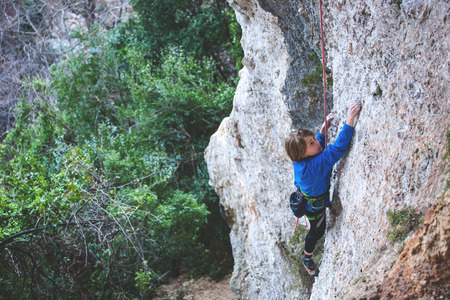1. Understanding the American Trail System and Common Hiking Risks
The Unique Landscape of U.S. Hiking Trails
The United States offers a huge variety of hiking trails, stretching from the lush forests of the Pacific Northwest to the rugged deserts of the Southwest and everything in between. Each region has its own character, trail conditions, and challenges. Whether you’re hiking in a well-maintained national park or exploring lesser-known local trails, understanding these differences can help you stay safe.
Regional Differences in U.S. Trails
| Region | Terrain Features | Potential Hazards |
|---|---|---|
| Pacific Northwest | Mossy forests, wet ground, steep inclines | Slippery roots, mud, sudden weather changes |
| Southwest | Rocky paths, desert heat, canyons | Dehydration, sunburn, loose rocks |
| Northeast | Wooded hills, rocky outcrops, streams | Slick rocks, ticks, uneven footing |
| Southeast | Dense forests, humid air, rolling hills | Heat exhaustion, insect bites, muddy trails |
| Midwest | Prairie grasslands, forested parks, lakeshores | Tall grass (ticks), unpredictable storms, muddy sections |
| Mountain West (Rockies) | High elevation trails, steep grades, snow patches even in summer | Altitude sickness, sudden storms, loose gravel |
The Most Common Hiking Injuries in the U.S.
No matter where you hike in America, certain injuries are more likely to happen due to the nature of the trails and outdoor environment. Knowing what to watch for is the first step to staying injury-free.
| Injury Type | Description & Causes |
|---|---|
| Ankle Sprains & Twisted Knees | Often caused by uneven terrain or stepping on rocks/roots. |
| Cuts & Scrapes | Bushwhacking through undergrowth or falling on rocky surfaces. |
| Blisters & Hot Spots | Poorly fitting shoes or long hikes without proper socks. |
| Heat Exhaustion & Dehydration | Common in hot regions like the Southwest or during summer months everywhere. |
| Hypothermia & Frostbite | Poor weather planning in mountainous or northern areas; sudden temperature drops. |
| Poisons Ivy/Oak/Sumac Rashes & Insect Bites/Stings | Mainly encountered in wooded and grassy regions across much of the country. |
| Tendonitis & Overuse Injuries | Carrying heavy packs or hiking long distances without adequate training. |
| Bites from Wildlife (e.g., snakes) | Mainly risk in southern and western states; rare but important to be aware of. |
Why Knowing Your Trail Matters?
The diversity of American landscapes means every hiker should do a bit of research before heading out. Check local trail reports and pay attention to regional risks—knowing if you need extra water for a desert hike or bug spray for a forest trek can make all the difference. By understanding both the layout of your chosen trail and the most common dangers you might face, youll be better prepared for a safe adventure on any U.S. trail.
2. Must-Have Gear and Preparation Tips for U.S. Hikers
Essential Hiking Gear for Different U.S. Terrains
The U.S. offers diverse hiking landscapes, from the rugged Rockies to the humid Appalachians and desert trails in the Southwest. Picking the right gear keeps you safe and comfortable on any trail.
| Terrain | Must-Have Gear | Why It Matters |
|---|---|---|
| Rocky Mountains (High Elevation, Variable Weather) | Layered clothing, insulated jacket, trekking poles, sturdy boots, sun protection | Weather changes quickly; rocky paths need ankle support; sun is intense at altitude |
| Southwest Deserts | Wide-brim hat, light long sleeves, extra water, electrolyte tablets, sunglasses | Protects from sunburn and dehydration; sand-resistant shoes help in loose terrain |
| Pacific Northwest (Rainy & Muddy Trails) | Waterproof jacket, moisture-wicking base layers, gaiters, waterproof boots | Keeps you dry and prevents blisters; gaiters keep mud out of your shoes |
| Appalachian Mountains (Humid Forests) | Bug spray, breathable clothes, rain cover for backpack, map/compass | Prevents bug bites and heat stress; sudden rain showers are common |
Packing for Changing Seasons
- Spring: Expect muddy trails—bring waterproof shoes and a rain jacket.
- Summer: Stay cool with ventilated hats and sunscreen; pack extra water.
- Fall: Layer up for chilly mornings but be ready to shed layers as it warms up.
- Winter: Insulated boots, microspikes or crampons for ice, thermal clothing are musts.
Clothing Tips to Prevent Injuries
- Avoid cotton: It holds moisture and can cause chafing or blisters.
- Cushioned socks: Prevent blisters on long hikes.
- Pants over shorts: Protect legs from ticks, poison ivy, or scrapes in brushy areas.
- Proper footwear: Choose boots or trail runners that fit well and match the terrain.
Simplified Checklist: What Every U.S. Hiker Should Bring
| Item | Main Purpose |
|---|---|
| Map/GPS device & compass | Avoid getting lost on unfamiliar trails. |
| First aid kit (include blister care) | Treat minor injuries before they get worse. |
| Sunscreen & bug spray | Prevent burns and bites year-round. |
| Sufficient food & water (plus purification tablets) | Avoid dehydration and fatigue. |
| Headlamp or flashlight (with extra batteries) | If your hike takes longer than planned. |
| Pocketknife/multi-tool & whistle | Tackle emergencies or signal for help. |
| Trekking poles (optional but helpful) | Add stability on rough or steep terrain. |
Smart Preparation for a Safe Hike
Create a Simple Trip Plan:
- Tell someone your route and expected return time.
- Check weather forecasts before heading out—conditions can change fast in many U.S. regions.
- Pace yourself and know your limits—turn back if you feel tired or conditions worsen.
Your Preparation Pays Off!
The right gear and thoughtful preparation help prevent most hiking injuries. By choosing equipment that matches your destination’s terrain and season—and by planning ahead—you’ll set yourself up for a safe and enjoyable adventure on America’s beautiful trails.

3. Recognizing and Preventing Overuse and Acute Injuries
Spotting the Signs: Common Hiking Injuries in the U.S.
Whether you’re trekking the Rocky Mountains or enjoying a weekend hike in your local state park, knowing how to recognize common hiking injuries is key to staying safe. The most frequent issues hikers face are sprains, blisters, and knee pain. Here’s what to watch out for:
| Injury Type | What It Feels Like | Typical Causes |
|---|---|---|
| Sprains (usually ankle) | Sudden pain, swelling, limited movement | Uneven trails, missteps, poor footwear |
| Blisters | Bubbles or sores on feet, burning sensation | Friction from socks/shoes, moisture, long hikes |
| Knee Pain (“Hiker’s Knee”) | Aching or sharp pain around kneecap | Steep descents, overuse, weak muscles |
How to Avoid Overuse and Acute Injuries
Ankle Sprains: Choose sturdy hiking boots with good ankle support and grippy soles. Watch your footing—especially on rocky or root-covered trails. Slow down when you’re tired, as fatigue increases your risk of missteps.
Blisters: Wear moisture-wicking socks (many American hikers swear by merino wool) and properly fitted shoes. Consider using blister pads or tape on hot spots before they develop. Keep your feet dry by changing socks if they get sweaty or wet.
Knee Pain: Use trekking poles on steep descents to reduce pressure on your knees. Strengthen your legs with squats and lunges at home. Take breaks during long hikes and stretch before hitting the trail.
Expert Advice: Quick Tips for Trail Safety
- Pace yourself—don’t try to set a speed record!
- Take regular water and snack breaks to keep energy levels up.
- If you feel pain coming on, stop and address it early instead of “toughing it out.”
- Cary a basic first aid kit with bandages, tape, and an ace wrap.
- If hiking in groups, check in with each other about how everyone is feeling.
Managing Injuries If They Happen
If you do get hurt on the trail, don’t panic. For sprains, follow the R.I.C.E. method (Rest, Ice, Compression, Elevation) as soon as possible. For blisters, clean them with antiseptic and cover with a blister pad—never pop them unless absolutely necessary. For knee pain, rest up and use ice after your hike. If any injury is severe or doesn’t improve after a day or two, contact a healthcare provider familiar with outdoor injuries.
4. Wildlife, Climate, and Environmental Hazards: Stay Safe in Every State
Understanding the Unique Dangers on U.S. Trails
Hiking across the United States means exploring a wide variety of environments—from the rocky mountains of Colorado to the humid forests of the Southeast and the arid deserts of the Southwest. Each state has its own set of potential hazards, so knowing what to expect is key to staying safe and injury-free on your adventures.
How to Avoid Dangerous Encounters with Wildlife
Wildlife is part of the American hiking experience, but certain animals can pose real risks. Here are practical tips for staying safe:
| Animal | Region | What to Do |
|---|---|---|
| Bears (Black & Grizzly) | Western, Northern states (e.g., Montana, Wyoming) | Carry bear spray, make noise while hiking, store food properly. Never run if you see a bear—back away slowly. |
| Snakes (Rattlesnakes, Copperheads) | Southwest, Southeast, Midwest | Watch where you step and place your hands. Wear boots and long pants. If bitten, remain calm and seek medical help immediately. |
| Mountain Lions | West Coast, Rockies | Stay in groups, keep children close. If confronted, stand tall and make yourself look bigger; don’t run. |
| Ticks & Mosquitoes | Nationwide (especially Northeast & Midwest for ticks) | Use insect repellent with DEET or picaridin. Wear long sleeves and pants. Check for ticks after hiking. |
| Bison & Moose | Northern Plains, Rocky Mountains | Keep a safe distance—at least 25 yards from bison/moose. Never approach or try to feed wildlife. |
Coping with Sudden Weather Changes
The U.S. has some pretty wild weather! From sudden thunderstorms in the Appalachians to flash floods in desert canyons or unexpected snow in the Rockies—being prepared can prevent many emergencies:
- Check forecasts: Always check local weather reports before heading out.
- Packing smart: Bring layers (even in summer), rain gear, and sun protection like hats and sunscreen.
- Avoid exposed areas during storms: If you hear thunder or see lightning, get below tree line and avoid ridges or open fields.
- Stay hydrated: Dry climates can dehydrate you faster than you think. Carry plenty of water and know where to refill on your route.
Navigating Natural Threats Specific to U.S. Trails
Certain natural hazards are more common in specific regions of the country. Here’s how to handle them:
| Hazard | Main Locations | Prevention Tips |
|---|---|---|
| Flash Floods | Canyons in Utah, Arizona, Nevada | Avoid hiking narrow canyons if storms are forecasted—even miles away. Know exit routes ahead of time. |
| Landslides/Rockfall | Pacific Northwest, Rockies | Stick to marked trails; don’t linger below cliffs or unstable slopes after heavy rain or snowmelt. |
| Extreme Heat | Southeast summers, Southwest deserts (e.g., Arizona, California) | Avoid midday hikes; wear light clothing; carry more water than you think you’ll need; recognize signs of heat exhaustion early. |
| Poisons Ivy/Oak/Sumac | Easterly wooded trails (Appalachians, Midwest) | Wear long pants; learn to identify these plants; wash skin/clothes ASAP if exposed. |
| Avalanches/Snowfields | Rockies, Sierra Nevada Cascades (spring/early summer) | Check avalanche forecasts; carry traction devices if crossing late-season snowfields; never cross risky areas alone. |
Your Safety Checklist Before Every Hike:
- Research trail-specific hazards for your chosen location.
- Packing includes first aid kit, emergency whistle, rain jacket, extra food/water.
- Let someone know your plans and expected return time.
- If traveling solo or in remote areas, consider carrying a GPS communicator or personal locator beacon.
- If unsure about conditions or wildlife presence—ask local rangers!
The Bottom Line: Stay Alert & Prepared!
No matter where you hike in the U.S., being aware of your surroundings and planning ahead goes a long way toward preventing injuries related to wildlife encounters or environmental hazards. With a little preparation, you’ll be ready to enjoy America’s incredible trails safely!
5. Emergency Preparedness and First Aid American-Style
What to Pack in Your U.S. Hiking First Aid Kit
No matter where you hit the trail in the United States, a well-stocked first aid kit is a must. Heres a handy table of essentials for your hiking pack:
| Item | Why You Need It |
|---|---|
| Adhesive bandages (various sizes) | Cover cuts, scrapes, or blisters |
| Gauze pads & adhesive tape | Stop bleeding or cover larger wounds |
| Antiseptic wipes/ointment | Clean wounds and prevent infection |
| Moleskin or blister pads | Cushion hot spots and blisters on your feet |
| Tweezers & safety pins | Remove splinters, ticks, or thorns |
| Pain relievers (like ibuprofen) | Ease aches, sprains, or headaches |
| Ace wrap/elastic bandage | Support sprains or strains |
| Emergency blanket (space blanket) | Stay warm if stranded or in shock |
| Nitrile gloves | Protect yourself when treating injuries |
| Sterile eye wash or saline solution | Rinse out eyes if needed |
| Benedryl/allergy meds | Treat mild allergic reactions |
| CPR mask (optional) | Adds protection for CPR emergencies |
| Small notepad & pen | Record important info during an emergency |
| Whistle & signaling mirror | Signal for help if you’re lost or injured |
Using Local Emergency Resources: How 911 Works on the Trail
If youre hiking in the U.S. and face an emergency, dialing 911 connects you with local dispatchers who can send search and rescue teams. Cell coverage can be spotty in remote areas, so here are some American-style tips:
- If you have cell service, call 911 and stay calm. Give them your exact location (trail name, mile marker, GPS coordinates if possible).
- If you don’t have service, move to higher ground—sometimes even a small hilltop can get a signal.
- If you carry a satellite messenger (like a Garmin inReach or SPOT device), use it to send an SOS message with your GPS location.
- Let someone know your plans before you head out—leave your itinerary with a friend or family member back home.
- The National Park Service or local ranger stations also offer emergency support—know where the nearest ranger station is before you go.
Steps for Dealing with Accidents in the Backcountry
- Assess the Situation: Check for immediate danger to yourself and others. Stay calm so you can think clearly.
- Check Responsiveness: If someone is hurt, see if they’re awake and breathing. Shout for help if others are nearby.
- Treat What You Can: Use your first aid kit to stop any serious bleeding, treat minor injuries, and keep the person warm and comfortable.
- Get Help: If it’s serious and you have cell coverage, dial 911 right away. Follow dispatcher instructions closely.
- If You Have to Leave to Get Help: Write down details (location, injury type) and leave it with the injured person. Mark your route to find your way back quickly.
- Avoid Making Things Worse: Don’t move someone with possible head, neck, or back injuries unless absolutely necessary.
- Stay Put If Lost: It’s safer to stay in one place once you’ve called for help; rescuers can find you faster that way.
The Bottom Line: Be Prepared Like an American Hiker!
Your best bet against common hiking injuries is being ready—carry the right gear, know how to call for help using U.S. resources like 911, and practice basic first aid skills before hitting America’s trails. With these steps, youll hike smarter and safer no matter where your adventures take you!


